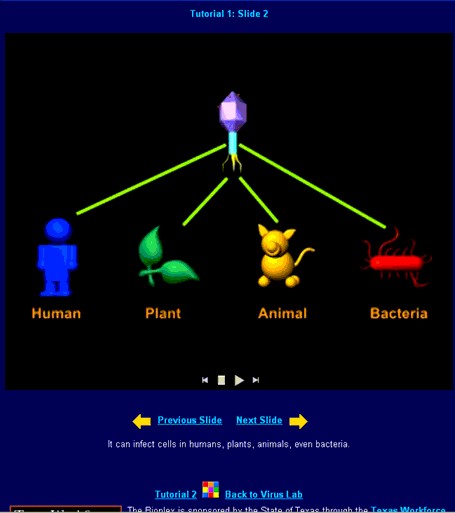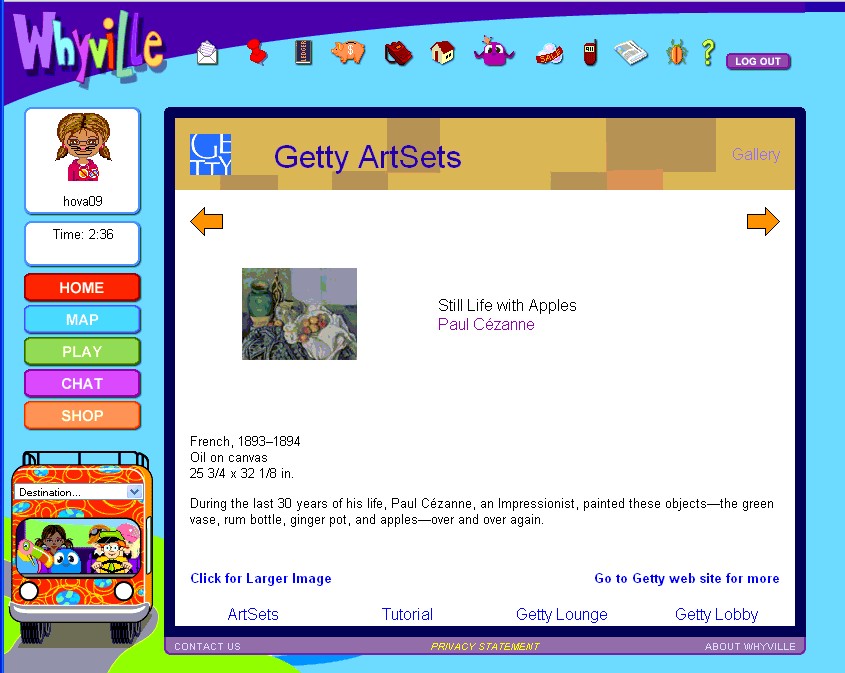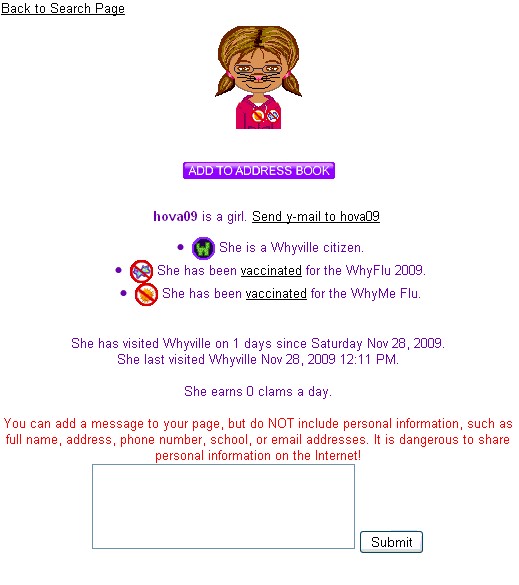So, I’ve been having some technical difficulties which have kept me from getting too deep into Second Life. Until that gets cleared up, I wanted to try out some other virtual worlds. So, I started an account on Whyville, an educational world aimed at kids. (The Wikipedia article gives some context about the background: Whyville was started in 1999 by a company started by some folks from CalTech, and currently has about 5 million users.)
My interest in virtual worlds for kids was piqued by Eric Meyers’ presentation for National School Library Day about his research into these spaces. It was easy enough to create an account, and get my avatar all set up. There was no problem with my being an adult — I could still pick “student” and even pick “college” as my grade. In order to get my “Chat Certificate,” I had to answer some questions about appropriate use of chat — that is, if anyone asks my address, I need to click the 911 button to alert the authorities. (Eric had mentioned this sort of safety feature built into other worlds, so it was interesting to see it in action.)
Apparently it is flu season in Whyville as well. The homepage has an extensive description of the WhyMe and WhyFlu flus that are going around, even including a report summarizing the number of infected folks. Even though I doubt these flus can be fatal, I decided to get vaccinated anyway.

That’s me in the bottom left. It’s funny that it cost me five clams, though — I don’t completely understand the economy yet, but I don’t have a job yet. The only way I can make money is by playing games, I think.
You can also see at the bottom of that image that there’s a link to “City Records.” Be still, my archivist heart! I clicked on that link, and up popped a search box: fill in any user name, and you can get information about that person. So I put in myself (hova09) and this is what came up:
So, it’s more like a telephone directory, but at least it plants the idea of public records, eh?
I also played around in a virology lab. It was timely — just last night at dinner, a question had come up about what viruses are, and how they live…or just exist and reproduce. In the Whyville virus lab, you can design vaccines…but also viruses themselves. I found the games a bit obscure — you basically try to design a virus using colored squares — the more closely the colors you pick match the colors of the avatar you’re trying to infect, the better you do. It struck me as creepy, to be perfectly honest. Virtual bioengineering? But the tutorial about viruses was not bad:

It’s all self-paced, very simple, just images and text, no audio component.
In order to have a well-rounded experience, I wanted to check out some beaux arts in Whyville. Luckily, the Getty Institute has a presence, so I stopped by to see the goods. And I have to say, it’s amazing to see a Cezanne framed by neon purple and green.

You can blow up the image, by the way, but you can’t lose the border. There are prolific links to the Getty website. I tried to do an art treasure hunt, but it didn’t seem to have been completed.This disappointed me, especially because I could have earned 50 clams, easy.
I had a hard time getting anyone to talk to me. There was a lot of whispering going on — only one person said hello to me, and then she disappeared. Sometimes it’s lonely being an avatar.
